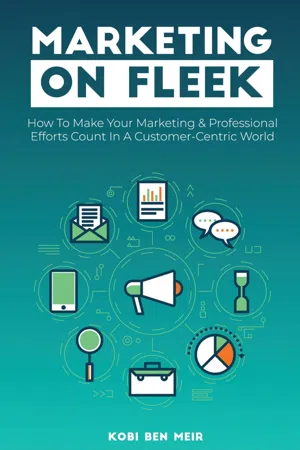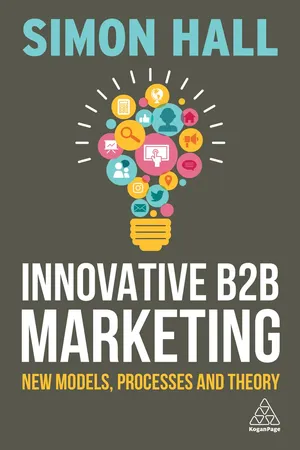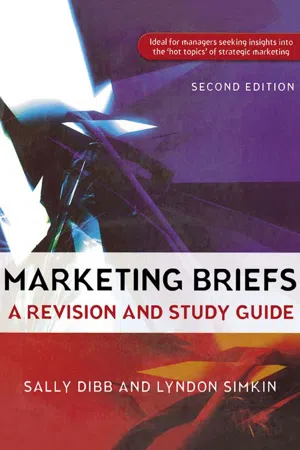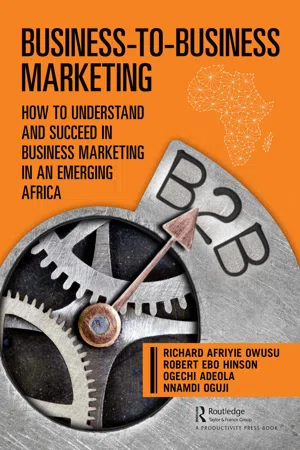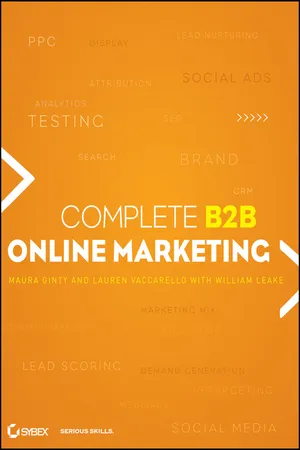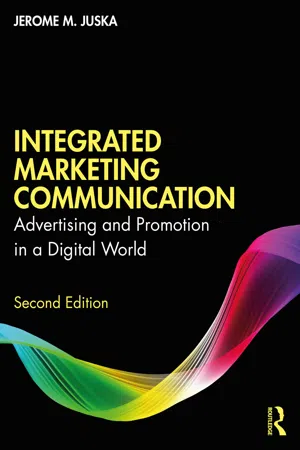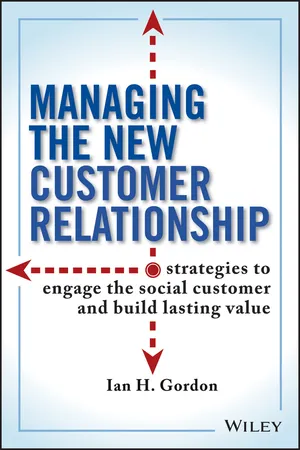Marketing
B2B Marketing
B2B marketing refers to the strategies and tactics used by businesses to promote their products or services to other businesses. This type of marketing focuses on building relationships, providing value, and addressing the specific needs and challenges of business customers. B2B marketing often involves longer sales cycles, multiple decision-makers, and a more rational and logic-based approach compared to B2C marketing.
Written by Perlego with AI-assistance
8 Key excerpts on "B2B Marketing"
Learn about this page
Index pages curate the most relevant extracts from our library of academic textbooks. They’ve been created using an in-house natural language model (NLM), each adding context and meaning to key research topics.
- eBook - ePub
Marketing on Fleek
How to Make Your Marketing & Professional Efforts Count In A Customer-Centric World
- Kobi Ben Meir(Author)
- 2020(Publication Date)
- Jacob Ben Meir(Publisher)
Chapter 10 B2B MarketingIf you are selling directly to customers, you are a B2C Marketer (Business to Consumer). However, if you are into B2B Marketing (Business to Business), that means you work for a business that sells services or products to other organizations rather than directly to customers.Compared to B2C marketing, B2B Marketing is more challenging because several things are at stake. For one thing, you need to take account of stakeholders and involve them at every step of the decision making process. These are complex relationships with the average B2B purchase involving 3 to 5 decision makers.In other words, you need to create content that can speak to both decision makers and influencers who actually buy your offerings. For that to be possible, you need to forge business relationships that can last for enough years to make a positive difference in terms of gains.Here are some aspects that can help you craft a marketing strategy that your business minded audience can respond to and engage with you: Build Personal Customer RelationsThe main focus of your B2B Marketing efforts should be to forge long term relationships that can drive business growth especially during the purchasing cycle. Remember, you are selling to businesses. These can be anything from wholesalers and distributors to suppliers who are selling to resellers.Unlike a B2C setup which has to forge an emotional connection directly with customers, there is no personal emotional involvement in a B2B purchase. In other words, rather than researching how your inventory can make their life better, you have to focus on understanding corporate buyers and their role in their organization’s infrastructure.This type of marketing focuses not on the people who use the products, but how they can save a distributor time, money, and resources. In simpler terms, what is the return on investment (ROI) they can benefit from by purchasing from you?Let’s use a simple example to understand this. Say you want to sell software to a business that will save time and money in the long run. If the tool can be used across different departments, it will be a significant purchase for the organization. - eBook - ePub
Innovative B2B Marketing
New Models, Processes and Theory
- Simon Hall(Author)
- 2017(Publication Date)
- Kogan Page(Publisher)
01Introduction to business marketing
The changing business landscape
In less than 100 years we’ve moved through multiple eras of business and industry, from the production age through to the marketing age and recently from the globalization era to the era of digital and applications.Various factors have affected a shift away from internationalization and globalization in the 21st century; businesses during this period moved from a model of focusing on globalizing to a more balanced model where businesses benefited from globalization but reverted to a more localized business approach; sometimes called the ‘Glocal’ model.Business today looks and feels very different even compared to 10 years ago; they need to deal with increased data and information; to understand and capitalize on digital technologies; to operate with rapidly shifting business models and new working behaviours where location becomes less relevant.As a result of this dynamically changing business environment, business-to-business marketing has needed to change, new models have needed to be developed and old models adapted. This book looks at the core areas of marketing where change has occurred and provides up-to-date tools for B2B marketers to deal with this challenging new business environment.What is B2B Marketing?
B2B Marketing, sometimes referred to as ‘business marketing’ or ‘industrial marketing’, is the practice of individuals or organizations marketing products or services to other companies or organizations. The customer in this case is an organization rather than an individual customer or consumer, though the products, services and solutions they purchase may sometimes be the same or similar. - eBook - ePub
- Sally Dibb, Lyndon Simkin(Authors)
- 2007(Publication Date)
- Routledge(Publisher)
43: Business-to-Business Marketing
Key definitionsOrganizational marketing, industrial marketing, or business-to-business marketing is marketing activity targeting other organizations rather than end-user consumers.An organizational business-to-business market is made up of individuals or groups that purchase a specific type of product for re-sale, for use in making other products, or for their use in daily operations.Business-to-business customers are other organizations and not end-user consumers: manufacturers; channel members such as retailers, wholesalers, agents, brokers, distributors and dealers; public sector bodies; not-for-profit organizations; other companies, or government departments.Types of business-to-business purchases are new task, modified re-buy or straight re-buy.Key issuesBusiness-to-business marketing involves exchanges and transactions between companies or organizations, including manufacturers, channel member organizations, public sector bodies, not-for-profit bodies, government departments and other companies.The terms business-to-business marketing, industrial marketing and organizational marketing are often used interchangeably.Products include raw materials, major equipment, component parts, accessory equipment and supplies, process materials and business services.There are often fewer customers in target markets than in consumer markets, and a great deal of data are routinely collected about organizational markets. In some respects, therefore, it is often stated that target marketing is relatively more straightforward in business-to-business markets than in consumer markets. - eBook - ePub
Business-to-Business Marketing
How to Understand and Succeed in Business Marketing in an Emerging Africa
- Richard Owusu, Robert Hinson, Ogechi Adeola, Nnamdi Oguji(Authors)
- 2021(Publication Date)
- Productivity Press(Publisher)
In the wake of increased globalisation, organisations operate beyond the domestic market to establish business relationships in international markets, thereby making B2B Marketing gain more prominence (Samiee et al., 2015; Leonidou & Hultman, 2019). Despite enormous frontiers, which B2B Marketing activities have covered, they still must operate within the scope of meeting the needs of the target market where they operate (Grönroos, 1989). The composition of a market notwithstanding, appropriate marketing of products and services demands that the business must know and understand the needs of the target audience. Maintaining good relationship becomes a critical factor in understanding the needs of the target audience. The changing definition of marketing reflects the importance of relationship marketing which is a key success factor in B2B relationships.As stated in the introduction, the American Marketing Association (AMA) defines marketing as “the activity, set of institutions, and processes for creating, communicating, delivering, and exchanging offerings that have value for customers, clients, partners, and society at large” (American Marketing Association, 2017). The definition reflects the current focus of marketing on value exchange (Brodie et al., 1997; Griesienė, 2014). The new paradigm of marketing (i.e. value and relationship marketing) which has evolved over the years covers marketing from the perspective of service marketing (Gronroos, 1990; Brodie et al., 1997); inter-organisational exchange relationship (Håkansson, 1982; Ford, 1990; Hallen et al., 1991; Brodie et al., 1997); network relationship (Axelsson & Easton, 1992; Johanson & Mattsson, 1985; Brodie et al., 1997); relationship in value chains (Normann & Ramirez, 1993; Brodie et al., 1997); and information technology between and within organisations (Scott Morton, 1991; Brodie et al., 1997). - eBook - ePub
- William Leake, Lauren Vaccarello, Maura Ginty(Authors)
- 2012(Publication Date)
- Sybex(Publisher)
Chapter 1Understanding B2B Online Marketing
Let’s face it: business-to-business (B2B) marketing is different. It is certainly different than those deal-of-the-day sites that popped up in 2010, multiplied like rabbits, and lurked around every corner in 2011. If you are tired of listening to case studies showing you how easy it is to increase sales on some ecommerce site or exhausted by going to webinars endlessly hawking some vendor’s wares while promising the moon, then this is the book for you.We will cover what is crucial for today’s successful B2B marketer. We will show you how to market your business—a business with a complex and considered sales cycle—online. Say good-bye to irrelevant case studies and hello to practical information and real strategies you can apply to your business today, tomorrow, and one year from now.Chapter Contents- Why Online?
- B2B Is Different
- Developing Your Strategy
- How Online Reflects the Sales Funnel: Objectives and Measurement
Why Online?
You are a B2B marketer. Your sales happen over the course of months, not minutes, so you can just scrap this whole online marketing thing, right? Just segment your list, send off emails for lead nurturing, write killer collateral material for sales, attend some events, let your agency put together some dimensional mailer campaigns, and your job is done and your company makes money. Other books may tell you that, but if you follow their advice, then over time your competitors will be happy, but your bosses won’t be. The world of traditional lead generation (direct mail, email plus teleprospecting) is dead; it is time to embrace the changing, integrated marketing landscape, or you will be left behind.Everyone—from the guy in the facilities management office to the CEO—uses the Internet to read, browse, surf, chat, and socialize, and online marketing is the tool to get in front of your audience. You want to get in front of them before they look for your product, while they are actively searching, and then when they need customer support. - eBook - ePub
Integrated Marketing Communication
Advertising and Promotion in a Digital World
- Jerome M. Juska(Author)
- 2021(Publication Date)
- Routledge(Publisher)
B2B and consumer marketing have many things in common when it involves IMC. B2B communication utilizes the same IMC pathways to reach customers and potential buyers. These six pathways are advertising, sales promotion, public relations, brand visibility, digital platforms, and personal contact. However, the budgets are lower, the target audiences are different, and the channels are more specialized.Figure 12.1 lists the eight most frequently used strategies for B2B Marketing communication: inbound marketing, vertical media, horizontal media, industry trade shows, co-op advertising, merchandising support, online catalogs, and virtual showrooms.Figure 12.1 B2B Communication StrategiesInbound Marketing
Inbound marketing is the reverse approach to traditional marketing. The assumption is that online search enables B2B companies to find the products and services they need without the assistance of a sales person. So, in the age of online search, B2B shoppers can always find you. That sounds impossible, but it’s true. So, how do B2B shoppers become B2B customers? There are six essential inbound marketing methods, which are shown in Figure 12.2 . These are complimentary consulting, industry reports, trending topics, free webinars, video tutorials, and data infograms. Inbound marketing is the reverse of consumer marketing, where manufacturers are aggressively pursuing customers with extensive advertising and sales promotion. Inbound marketing is more passive. Techniques such as industry reports and free webinars are the lure that attracts potential buyers to visit a company’s website. The information provided is an important step toward establishing trust and building a relationship.Figure 12.2 Inbound Marketing TechniquesThe largest and most successful inbound marketing company is Hubspot. It was the pioneer of inbound marketing and has earned a reputation for providing small and mid-size business with the tools needed for successfully attracting new customers. The Hubspot website describes the company as a “business-oriented growth model that attracts visitors, engages leads, and delights customers.” They have multiple packages, including comprehensive Customer Relationship Management software and automated business resources that are designed for internal growth and customer retention as well as expansion. This includes tracking leads and contact along with providing customer support. There is a famous case study about Hubspot that is used in business school for evaluating the types of programs that best fit each company’s goals. Hubspot’s own marketing strategies includes simple but valuable information to attract new clients, such as free webinars, industry reports, and data infograms. If you are not familiar with the products and services of Hubspot, then go to www.hubspot.com - eBook - ePub
Managing the New Customer Relationship
Strategies to Engage the Social Customer and Build Lasting Value
- Ian Gordon(Author)
- 2013(Publication Date)
- Wiley(Publisher)
Table 16 summarizes some of the relationship differences between a company catering to consumers as opposed to business customers. A description of each of the differences follows this summary.Table 16 Consumers, B2B Customers and Relationships.Consumer Marketplaces Business-to-Business Marketplaces Goods and Services Convenience, shopping and specialty goods and services necessitate different categories of relationships, ranging from relationships that are more product- or brand-centric, or comprise more ephemeral variables—the case for convenience goods—to relationships that focus more heavily on benefits, intangibles, social, contextual and longitudinal variables—the case for specialty goods. B2B goods and services can vary significantly according to whether or not they are associated with near-term consumption—in which case they have elements more similar in nature to convenience goods in consumer marketplaces (e.g., cleaning supplies)—or are at the strategic heart of the value the company delivers, such as the glass Apple uses in its iPods and iPads—in which case relationships become more complex and mutual planning becomes more important. Marketplace Structure Demand is typically fragmented among large numbers of customers, making it especially important to triage customers so that the enterprise knows who is best, average and worst in the context of profit expectations, strategies and capabilities. Demand is more concentrated among fewer customers, making it especially important to understand each individual business customer as a separate and distinct market. Distribution Channels Companies marketing to consumers often go through multiple layers of distribution as the channel intermediaries such as wholesalers, dealers and retailers perform various intermediary functions such as breaking bulk (buying in quantity and selling in more modest volume), consumer financing, delivery, installation and after-sales support, for example. E-marketing has served to de-layer distribution channels so that consumers have the option of buying goods more directly than previously, although perishables and some other goods continue to go through multiple layers of channel intermediaries out of necessity. Suppliers of consumer goods often have two categories of relationships that must be developed and sustained: relationships with channel intermediaries and relationships with the end-buyer or consumer (e.g., where buyer and consumer may be different—as in the case of children's clothing). - eBook - ePub
Humanizing B2B
The new truth in marketing that will transform your brand and your sales
- Paul Cash, James Trezona(Authors)
- 2021(Publication Date)
- Practical Inspiration Publishing(Publisher)
2 B marketing, in which constant innovation and customer engagement has become more than a canny strategy for ambitious, upwardly mobile companies – it’s become an absolute necessity for survival. A relatively consistent and predictable world, in which market leaders enjoyed economies of scale and achieved dominance over smaller rivals, has long given way to a more unpredictable environment in which dominant market ‘gorillas’ are increasingly vulnerable to the guerrilla strategies of faster, more creative opponents.The five principles of growth in B2BIn 2019, the B2 B Institute at LinkedIn (B2 Bi @ LinkedIn), frustrated with the paucity of research material on B2 B brand building, commissioned brand effectiveness luminaries Les Binet and Peter Field to carry out original research on the fundamentals of B2 B marketing. Surely, thought the B2 Bi @ LinkedIn, we instinctively know that we buy from brands rather than faceless companies, so why wasn’t there more evidence-based research on the subject? And why did B2 B not seem to understand the long-term value of brands? To answer this, Binet and Field used the UK IPA Databank, one of the world’s best sources of information on marketing effectiveness, to see which B2C and B2 B strategies worked best. They discovered some interesting patterns in the data which show that B2 B has much to learn from B2C. If you want more of a nuts-and-bolts rundown of the research, you’ll find it later in the chapter ‘The undeniable facts’; what follows is a useful summary to get you thinking.The resulting report7 is a goldmine of information which, in our view, is essential reading for any B2 B marketer wanting to transform their company’s fortunes. In summary, it shows that ‘a number of key growth drivers in B2C marketing also work for B2 B businesses, and by implication that there is a much greater commonality in best practice across B2C and B2 B sectors than is usually believed’, which is just a somewhat dry way of advising B2
